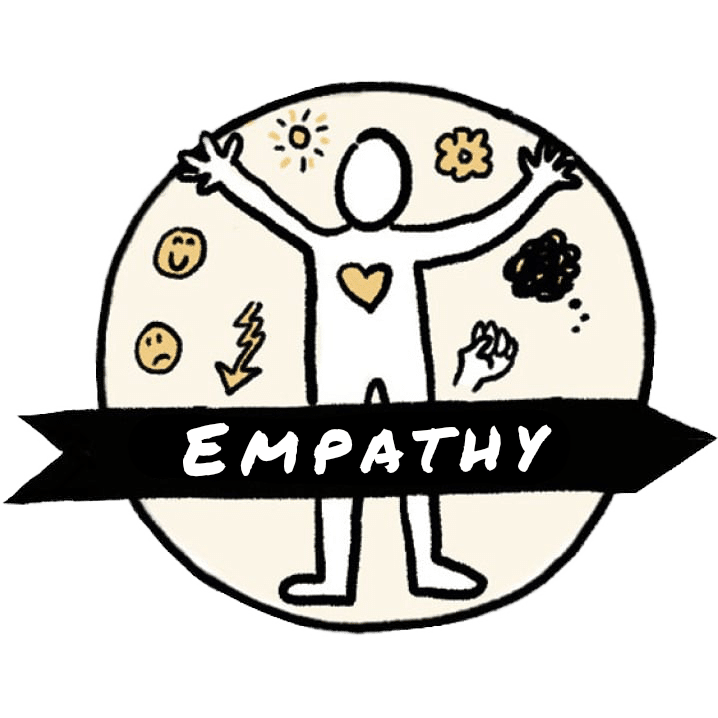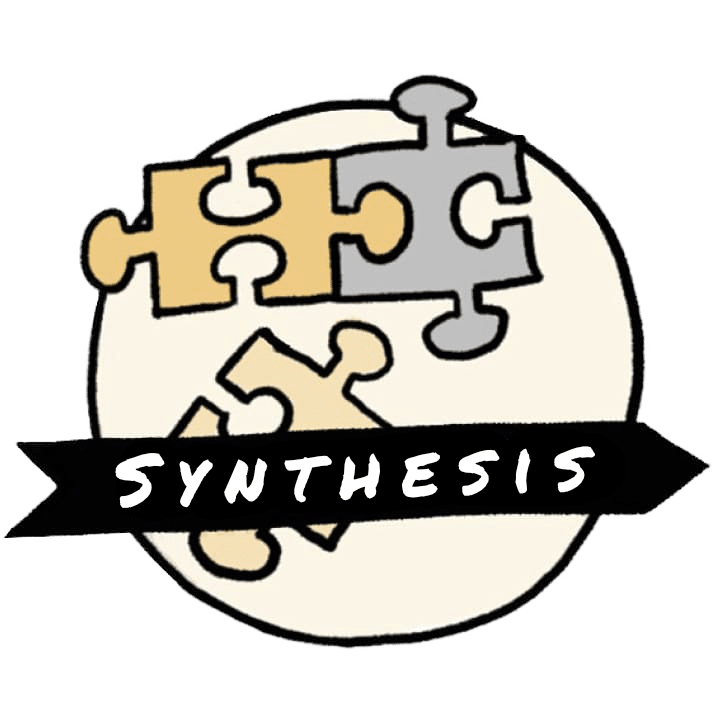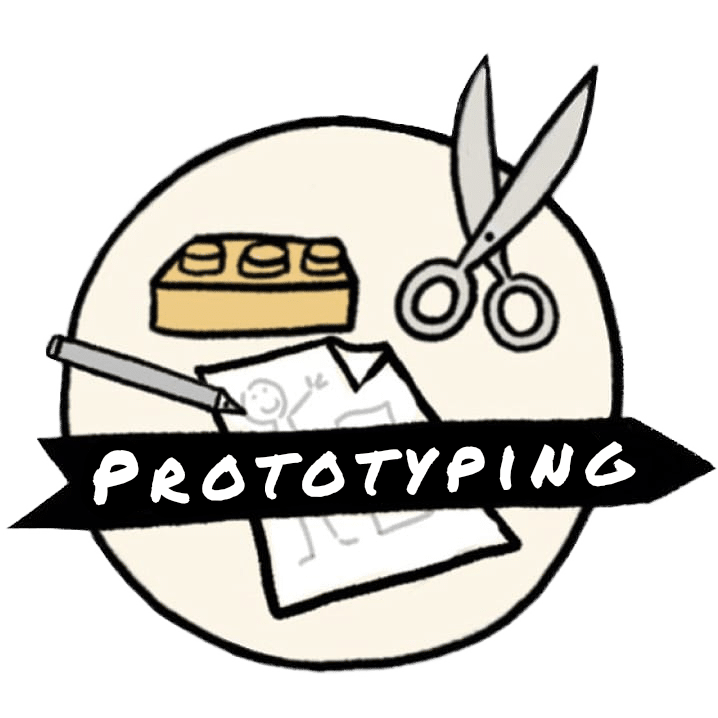Design Thinking Process
Design Thinking process in 6 stages: Understand, Empathy, Synthesis, Ideation, Prototyping and Testing.
The design thinking process is an approach to developing new ideas and solving problems from the perspective of customers or users. It consists of six phases, namely understanding, empathy, synthesis, idea generation, prototyping and testing. These phases are essential for a successful design thinking process, as already described in the design thinking definition.
In the problem space, the focus is on a comprehensive understanding of the initial question and the user’s needs. In the understanding, empathy, and synthesis stages, the team dives deep into the problem and gains a clear understanding.
Once the solution space is reached, ideation begins in stage 4, where the team creates, verifies, and tests proposed solutions to solve the problem. Prototyping and testing are important steps in the design thinking process.
By applying the design thinking principles (people at the center, ambiguity, iteration, show don’t tell) and considering the three levels in Design Thinking (mindset, skillset, toolset), the design thinking process is supported and promoted.
The Design Thinking process offers a structured approach to tackle complex problems and develop innovative solutions. The clear division into phases and the emphasis on user orientation make it a valuable tool for organizations and teams seeking creative and user-centered solutions.
In our Design Thinking Coach Course you will learn to work with all stages, use methods effectively and how to coach teams and support the whole organization using Design Thinking.
Stage 1: Understand
The design thinking process starts in the problem space with an initial question or briefing. In the first phase, the team strives for a common understanding of the problem and the topic of the challenge. The problem is examined in more detail, connections and already existing prior knowledge, but also existing assumptions or prejudices are uncovered and compared in research. Instead of jumping directly from the problem to the solution, which is often the case in the otherwise “standard” solution finding process, the problem space is first understood before relevant solutions are developed. The team tries to illuminate the initial question from different angles in order to identify areas of interest for further research.


Stage 2: Empathy
The second phase of a design thinking project is about developing an empathetic understanding of the people involved. This should aim to identify the wishes and needs of the end users in relation to a specific problem. Different techniques can be used for this purpose:
- Interviews,
- ethnological observations or
- Immersion (e.g. taking the perspective of a participating user)
Team members actively set aside existing assumptions to allow a fresh perspective on the problem and the often unspoken needs of those who are actually experiencing the problem.
Stage 3: Synthesis
In synthesis, the data and observations from the empathy phase are collected, analyzed and interpreted. The goal is to derive knowledge and insights to define the core issues. It is about making a connection between what was said and observed and what it might mean. The problem is sharpened in the form of a user-centered perspective by combining the information and insights gained. A vivid and sharpened picture of the problem is crystallized, which can be further worked with in the solution space.


Stage 4: Ideation
With the completion of the previous stage, the change from the problem space to the solution space is also completed. The next phase of the design thinking process is about idea generation. Here, the teams use the insights gained so far to develop creative ideas for the previously defined problem.
After the synthesis was about becoming concrete, the team opens up again in this section to collect as many ideas as possible. Also, unconventional ideas are encouraged and people are pushed to think “outside the box.” “There are no bad ideas!” This attitude allows teams to think freely and expand the solution space. At the end of the ideation process, teams create a shortlist of the best ideas to solve the problem.
Stage 5: Prototyping
In this phase, the focus is on experimentation. By building and creating prototypes – for example from Lego, cardboard, or other analog and digital materials – the team develops solutions from ideas. The goal is to create a tangible artifact that potential users can test. Through this process, the team produces simplified versions of the idea. It is important to note that this phase is not about validating finished ideas. The outcome should create a shared understanding about the idea and the underlying assumptions.


Stage 6: Testing
In the sixth and final phase, the team tests the previously created prototypes with potential users. The goal of testing is to get emotions, thoughts and reactions as feedback from the tester. The results obtained are used to make changes and refinements and even redefine the problems or deepen the understanding of the users involved. Depending on where the team is, it can either continue to work in this phase until it achieves the desired result. Or it can iteratively jump to another phase to, for example, sharpen the user group, create customized, more relevant ideas, or create another prototype.
The design thinking approach is based on David Kelly, Larry Leifer und Terry Winograd from Stanford University in the USA. They had the idea of using the creative way in which designers develop new products or services as a method of innovation for other areas as well.
The design thinking innovation process goes through several steps:
- Understand: Generate understanding about the initial question in the team
- Empathy: Identify the needs of the users
- Synthesis: Evaluate and summarize data from the empathy phase
- Ideation: Brainstorming many ideas through different methods
- Prototyping: Making first solutions tangible
- Testing: Users give feedback on prototypes
With the help of tools such as storytelling or visualization with Lego, cardboard or other materials, an idea can be illustrated, experienced and thus made tangible in a short time. This gives the team the opportunity to consolidate their common understanding and find out whether the underlying assumptions are correct.
There are many different ways to represent the design thinking process. Sometimes it has five phases, sometimes six. At Veraenderungskraft, we use the process of the Hasso Plattner Institute from Potsdam with six phases. The difference to the 5 stages at Stanford University is the “understanding” step (Understand), together with the empathy phase, which is often summarized in other representations. In this first phase, a common understanding of the initial question is generated in the team. Only then does the “empathy” phase begin with the research. In our Design Thinking Coach Course you will focus on the 6-stages approach of Design Thinking.
Neueste Blogposts

Es hapert schon an den Basics – warum agiles Arbeiten nicht nur eine Frage des Mindsets ist
Sylvius beobachtet bei vielen Unternehmen und Organisationen, die er berät, ein Problem, das sich über die Jahre hinweg konstant zeigt: Die einfachsten Rahmenbedingungen oder Praktiken

Jenseits von Meetings: Die echte Rolle des Scrum Masters
Licht ins Dunkel bringen: die oft missverstandene Rolle des Scrum Masters. Ich möchte ein weitverbreitetes Missverständnis über die Rolle des Scrum Masters aufklären. Viele denken,

Remote-Trainings gestalten – auch das lernen Sie bei uns
Scrum-Übungen in Break Out-Sessions, agile Kollaboration auf Miro, Planungs-Poker im Forum, Frontalunterricht zu systemischen Wechselwirkungen. Was? Wie? Wann? Womit? Fragen, die beim Aufsetzen von Workshops
